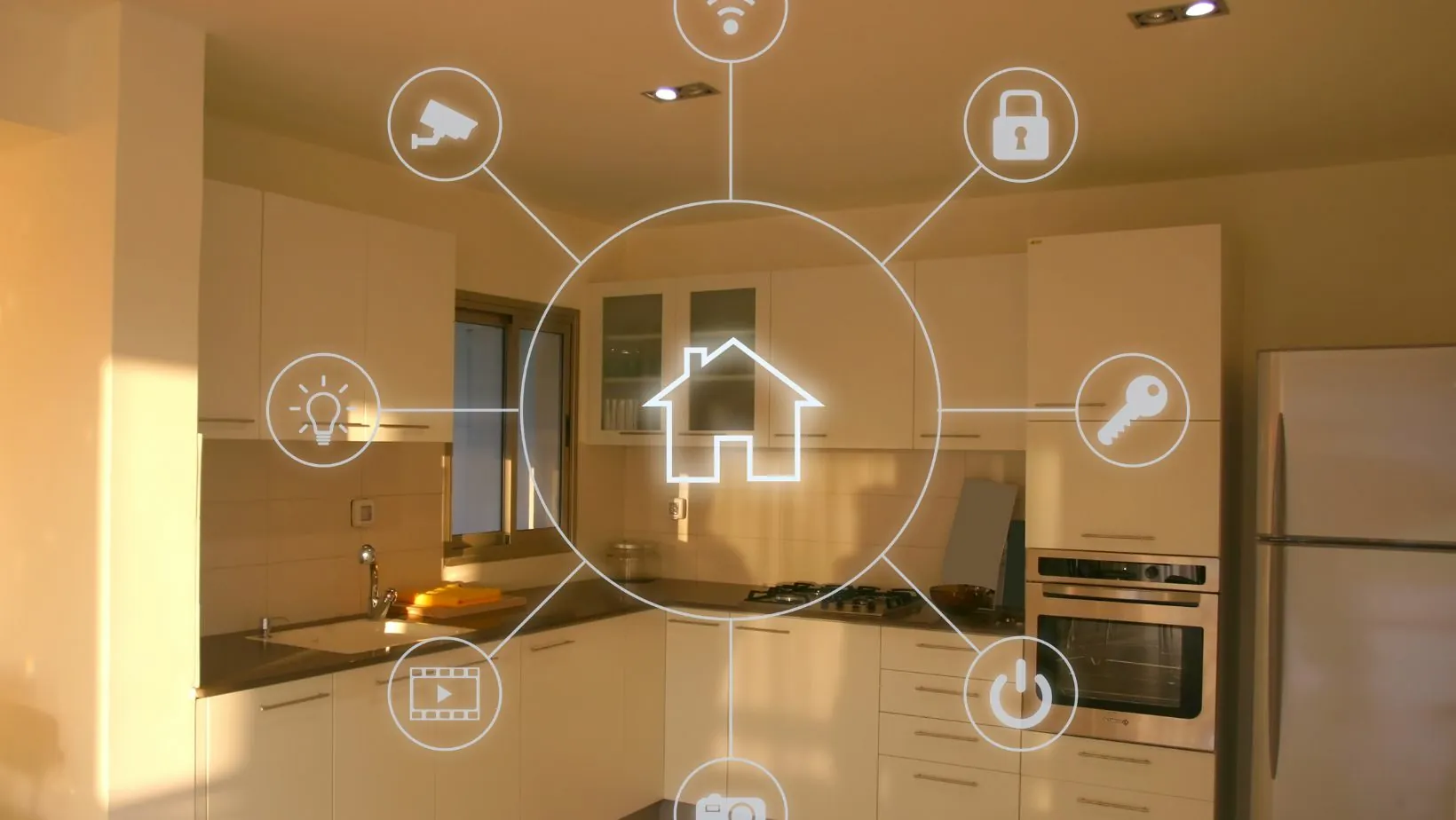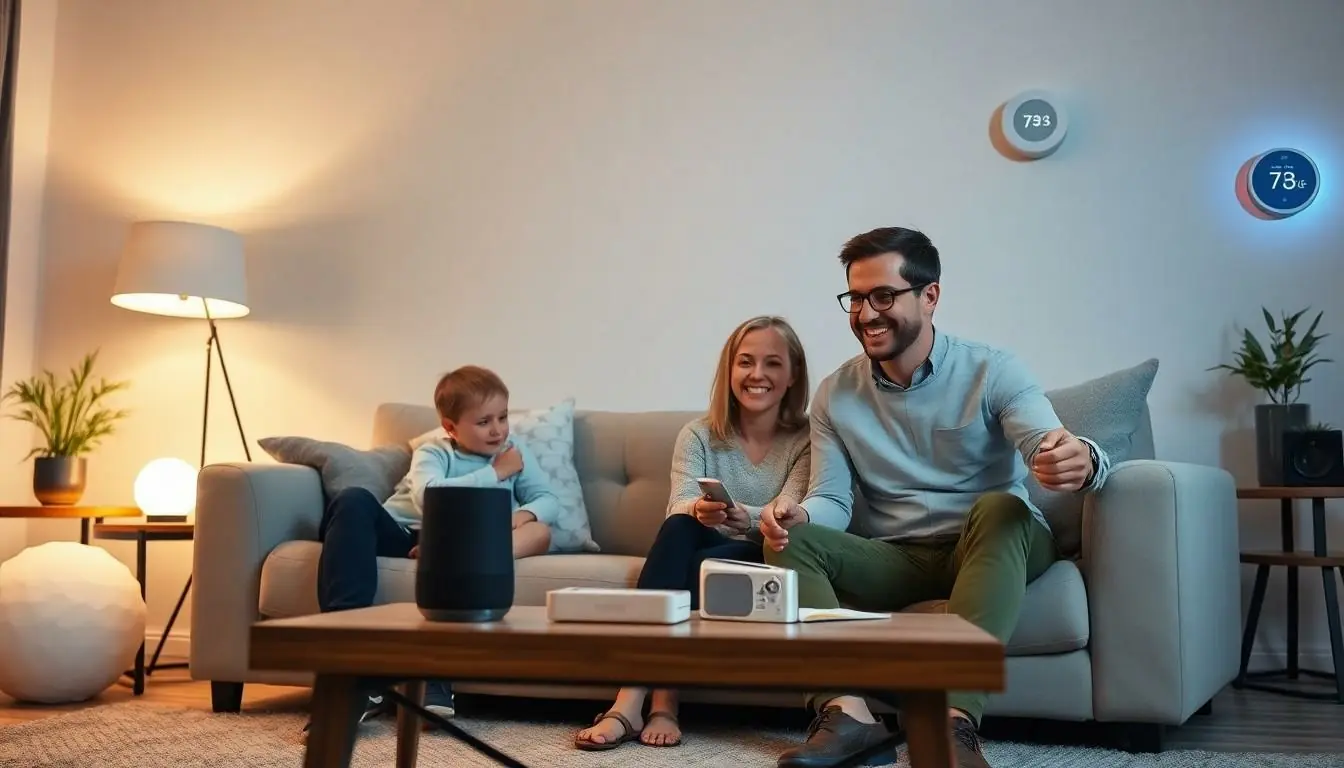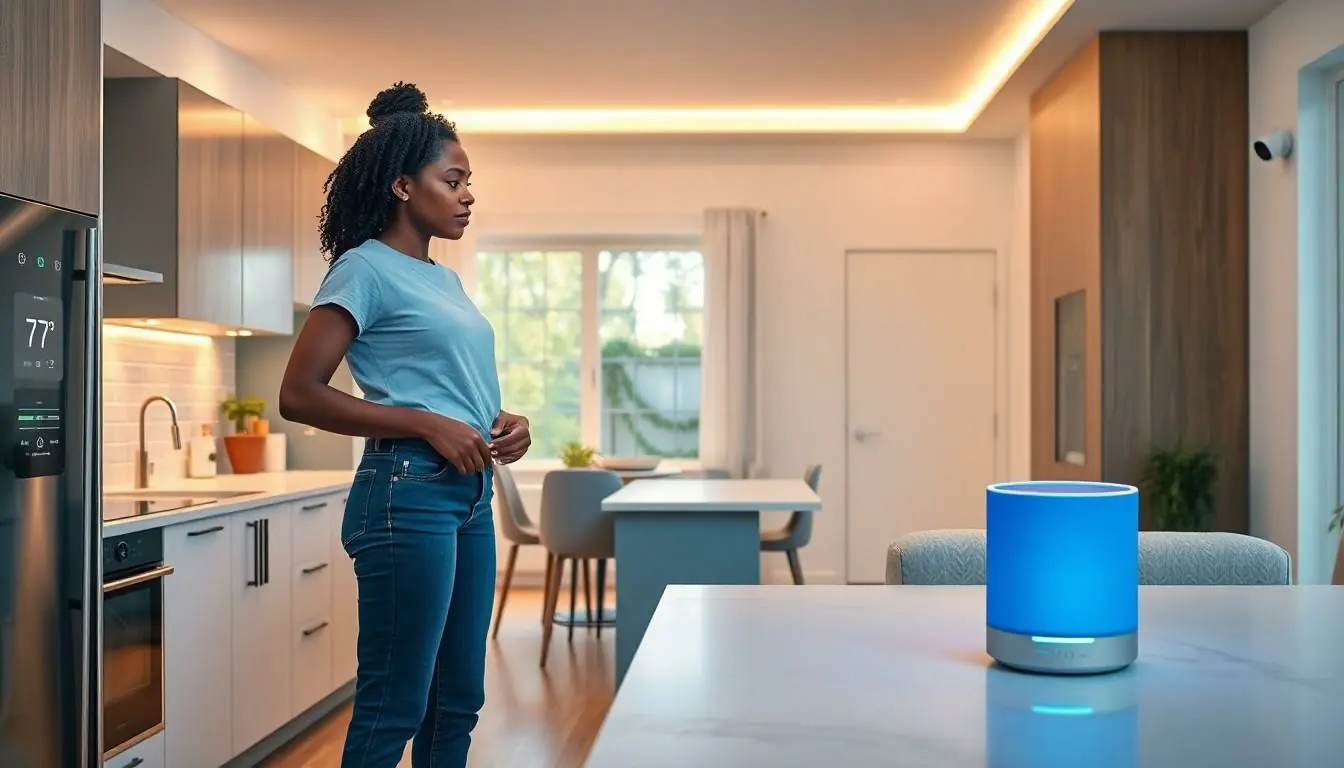Imagine waking up to the smell of freshly brewed coffee, your home adjusting the temperature just right, and your lights gently illuminating your path—all without lifting a finger. Welcome to the world of smart homes powered by AI, where technology transforms everyday living into a seamless experience. It’s like having a personal assistant who never sleeps and always knows exactly what you need.
Table of Contents
ToggleOverview Of Smart Homes With AI
Smart homes integrate artificial intelligence to create an environment that anticipates the needs of its occupants. Various devices, including smart speakers, thermostats, and security cameras, communicate with each other to enhance convenience and security. Automation plays a significant role, enabling routines like locking doors or adjusting lights at specified times.
Data analytics enables smart homes to learn from user behavior, allowing them to adapt and optimize energy consumption over time. For instance, smart thermostats analyze typical heating and cooling patterns, adjusting settings to improve comfort while reducing energy costs.
Voice-activated assistants provide hands-free control, facilitating access to information and home management through voice commands. These assistants respond to queries about schedules or weather updates, making daily tasks more efficient.
Home security benefits from AI technology by employing smart cameras that offer real-time surveillance and alerts. These systems can differentiate between familiar faces and strangers, thereby enhancing safety measures.
Smart appliances also contribute to the AI ecosystem by streamlining chores. For example, refrigerators can track inventory, suggesting recipes based on available items. This optimization leads to less food waste and encourages healthier eating habits.
The convenience offered by AI in smart homes elevates the overall living experience. Enhanced connectivity through the Internet of Things allows all devices to operate seamlessly, creating a cohesive and user-friendly environment.
Benefits Of Smart Homes With AI
Smart homes powered by AI deliver significant advantages, particularly in security and energy efficiency. These benefits enhance the quality of life for residents.
Enhanced Security Features
Smart homes utilize AI to bolster security systems. Real-time surveillance capabilities allow homeowners to monitor their properties remotely. Automated alerts from smart cameras notify residents of unusual activity. Integration with doorbell cameras enables visual identification of visitors before opening doors. Furthermore, AI-driven analytics can distinguish between familiar faces and strangers, reducing false alarms. This combination of features fosters a safer living environment and provides peace of mind.
Energy Efficiency Improvements
AI-driven smart homes optimize energy consumption effectively. Smart thermostats adjust heating and cooling based on occupancy patterns, reducing unnecessary energy waste. Additionally, data from smart meters gives insights into energy usage, allowing for more informed decision-making. Smart lighting systems can provide dimming features and schedule automation, ensuring lights operate only when needed. These energy-efficient practices not only lower utility bills but also contribute to environmental sustainability by minimizing the carbon footprint.
Key Technologies Behind Smart Homes With AI
Smart homes leverage advanced technologies to enhance user experience and efficiency. These technologies include Internet of Things devices and machine learning algorithms.
Internet Of Things (IoT) Devices
IoT devices serve as the backbone of smart homes, connecting various appliances and systems. Smart speakers, lights, thermostats, and security cameras communicate seamlessly, enabling automation. Each device collects data, allowing for real-time monitoring and control. For example, smart thermostats learn user preferences to adjust heating and cooling automatically. Many IoT devices offer remote access through mobile applications, granting users control from anywhere. Enhanced connectivity fosters a cohesive home environment, streamlining daily tasks and improving convenience.
Machine Learning Algorithms
Machine learning algorithms play a pivotal role in smart homes by analyzing data generated by IoT devices. These algorithms learn from user behavior, enabling predictive analytics that optimize performance. As they analyze patterns, they adjust systems accordingly, enhancing energy efficiency and comfort. For instance, a machine-learning-powered security system can identify unusual activity and send alerts. Continuous learning allows these systems to adapt to changing household dynamics over time. Ultimately, machine learning enhances the intelligence of smart homes, making them more responsive to occupants’ needs.
Popular AI-Driven Smart Home Devices
AI-driven smart home devices enhance convenience and efficiency, making daily tasks easier for residents.
Smart Speakers
Smart speakers serve as central hubs in smart homes. These devices enable voice-activated commands for tasks such as playing music and controlling other smart devices. Amazon Echo and Google Nest are two leading options on the market. They respond to natural language commands, integrating with various applications and services. Users can ask them questions, set reminders, or adjust thermostats seamlessly. Compatibility with numerous smart home devices fosters an interconnected ecosystem, enhancing the overall user experience.
Smart Thermostats
Smart thermostats optimize heating and cooling with advanced algorithms. Nest and Ecobee models learn user preferences over time. They adjust temperatures based on occupancy and time of day, leading to significant energy savings. Many models permit remote control through smartphone apps, allowing users to set schedules or make adjustments while away. Additional features often include energy usage reports, offering insights into consumption patterns. This data empowers homeowners to improve efficiency and reduce utility costs, making them a valuable addition to any smart home.
Smart Security Systems
Smart security systems provide comprehensive monitoring and protection. Devices such as Ring and Arlo cameras offer real-time surveillance, sending alerts for unusual activity. These systems often feature motion detection and night vision capabilities. Integration with smart speakers allows for voice alerts and remote access. Users can review camera feeds from any location, ensuring peace of mind. Many systems also include smart doorbells that enable two-way audio communication, allowing users to interact with visitors. Enhanced security features create safer living environments, making smart security systems essential for modern households.
Challenges And Considerations
Smart homes with AI present various challenges that require careful consideration.
Privacy Concerns
Privacy concerns dominate discussions about smart homes. Devices often collect vast amounts of personal data, which might include usage patterns, daily routines, or even conversations. Many users express worry about unauthorized access or potential data breaches. It’s crucial to ensure robust security measures are in place to protect sensitive information. Encryption protocols and regular software updates significantly enhance data security. Users should also actively review privacy settings on their devices, as many smart home systems allow customization of data sharing preferences. Transparency from manufacturers about how data is used plays an essential role in building user trust.
Interoperability Issues
Interoperability issues pose significant challenges for smart home systems. Various manufacturers produce devices that might not communicate effectively with each other. This lack of standardization can lead to compatibility problems, frustrating users who want a seamless experience. Customers often face difficulties integrating devices from different brands into a single cohesive system. Adhering to universal standards like Matter can facilitate smoother communication between devices, leading to enhanced functionality. Selecting products known for their interoperability features ensures a more streamlined smart home experience. As technology evolves, innovation in common protocols will help alleviate these concerns over time.
Smart homes powered by AI represent a significant leap forward in enhancing everyday living. With the ability to automate tasks and anticipate needs, these homes create a seamless environment that prioritizes convenience and security. As technology continues to evolve, the integration of IoT devices and machine learning will further refine how residents interact with their living spaces.
While challenges like privacy concerns and interoperability remain, the benefits of energy efficiency and improved security are undeniable. Embracing these innovations not only enhances comfort but also contributes to a more sustainable lifestyle. As more households adopt smart technology, the future of living will undoubtedly become even more connected and intelligent.







